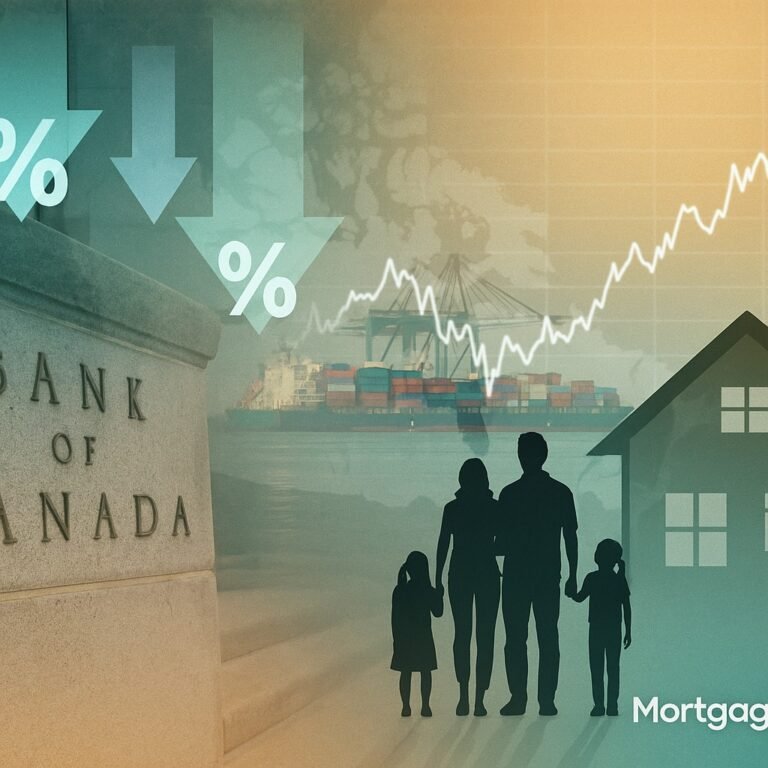
Canadian Mortgage Rates Hold Steady; Variable Terms Edge Up
Canadian mortgage rates showed stability on September 30, 2025, with fixed terms flat at 4.73% and 4.68%, while variable products nudged higher amid funding cost pressures.
Toronto | September 30, 2025, 10:00 IST — Canadian mortgage rates showed little movement this week, with both three-year and five-year fixed terms holding flat while variable products crept higher, according to data released by nesto.ca. The picture reflects the tension between central bank policy easing and lenders’ caution about funding costs in the face of volatile markets.
Fixed Rates Remain Anchored
The average 3-year fixed conventional mortgage rate stood at 4.73 %, unchanged from the previous week. Similarly, the average 5-year fixed rate was reported at 4.68 %, holding steady week-on-week.
Fixed mortgage rates in Canada are closely linked to the movement of government bond yields, particularly five-year Government of Canada bonds. Over the past month, yields have drifted within a narrow range around 2.6–2.7 %, limiting the ability of lenders to cut rates further. Mortgage brokers noted that while some discounting is evident at smaller lenders, the larger banks are reluctant to make aggressive moves until they see clearer signs of sustained declines in bond yields.
“Fixed rates remain stubborn because lenders are watching global bond markets more than the Bank of Canada,” explained one Toronto-based mortgage strategist. “Until we see a stronger rally in bonds, borrowers shouldn’t expect dramatic drops in five-year fixed terms.”
Variable Rates Tick Higher
In contrast, variable or adjustable mortgages saw modest upward pressure. The average 3-year variable rate climbed five basis points to 5.25 %, while some five-year variable products also moved higher by 2–3 basis points.
This may appear counter-intuitive following the Bank of Canada’s September 17 rate cut, which lowered the policy rate to 2.50 %. That move immediately pushed down the prime rate at major banks, which typically anchors variable mortgage pricing. However, mortgage lenders have discretion in how much of the rate cut they pass along to consumers, and many are choosing to keep spreads wider to protect margins.
Industry analysts suggest that funding costs for variable products, which depend partly on short-term money markets, have not fallen in line with the BoC cut. International demand for Canadian debt, currency movements, and concerns over inflationary pressures are contributing to the caution.
Why It Matters for Borrowers
For homebuyers and homeowners facing renewals, this mixed picture is significant. Fixed mortgage rates remain above 4.5 %, which is higher than the ultra-low rates locked in during the pandemic years. For those whose mortgages are coming up for renewal, monthly payments could jump by hundreds of dollars, especially if they initially borrowed at 1.5–2 %.
Variable-rate borrowers, who had expected more immediate relief following the central bank’s decision, may be disappointed to see lenders moving more slowly. With the average 3-year variable now above 5.25 %, payments remain elevated compared to historical norms.
Some homeowners are therefore considering hybrid strategies, such as locking into shorter-term fixed mortgages to ride out the current volatility, or opting for variable products with more flexible prepayment terms in case further cuts materialize later this year.
Bank of Canada Policy Backdrop
The September rate cut marked the first reduction in the overnight target rate in several months. The Bank of Canada justified the move by pointing to easing inflationary pressures and a slowing economy. Officials also suggested that further cuts could follow if growth remains subdued and price pressures continue to moderate.
Market participants currently expect at least one more 25 basis point cut by the end of 2025, which would bring the policy rate to 2.25 %. Economists believe that if inflation holds near target and global conditions remain stable, the central bank could proceed cautiously with additional easing in 2026.
Nevertheless, the path forward is uncertain. A weaker Canadian dollar—now near four-month lows against the U.S. dollar—could make imports more expensive, potentially complicating the inflation outlook. In addition, global energy markets and U.S. monetary policy could influence the Bank of Canada’s next steps.
Outlook
For now, Canadian mortgage rates appear to be in a holding pattern. Fixed rates are unlikely to decline meaningfully without a sustained rally in bond markets, while variable rates will remain subject to both central bank actions and lenders’ internal pricing strategies.
Borrowers should expect modest relief over the coming months, but the era of sub-2 % mortgages is firmly in the past. With affordability stretched in major metropolitan areas such as Toronto and Vancouver, even small rate moves will have an outsized impact on buyer sentiment and refinancing decisions.
Financial advisors recommend that homeowners approaching renewal begin consultations well in advance, exploring options such as blended rates, extended amortizations, or accelerated prepayments to manage higher costs.
On September 30, 2025, the Canadian mortgage market signaled stability rather than dramatic change—fixed rates flat, variable rates slightly higher, and policy makers preparing for a gradual path of easing.
📞 Have Questions About Your Mortgage?
Whether you’re renewing, refinancing, or buying your first home, our experts can guide you with tailored advice.
Talk to a Mortgage ExpertStuck with a Mortgage Decision?
Don’t stress — our team is here to help. Reach out for free, no-obligation guidance.
Contact the Experts



